What to Know
Siberian Husky
[Alert, Friendly, Outgoing, Intelligent, Gentle, Loyal]
In today’s post, I will give you the ultimate Guide on Siberian Husky Breed Characteristics if you’re thinking of getting one or just want to learn more about this majestic animal.
In fact:
I love this breed so much that I got one myself not too long ago, and he has quickly become a part of the family.
Without further ado, let’s get started.
The Siberian Husky is a beautiful dog breed with a thick coat of fur that helps protect them from the cold weather in their native homeland of Siberia.
They are also very friendly and good with children, making them a popular choice as a family pet.
However, there are some things potential owners should be aware of before getting a Siberian Husky, such as their high energy level and strong prey drive.
Please keep reading to learn more about the Siberian Husky breed, including their history, appearance, personality, and care needs.
Siberian Husky Breed Characteristics & Traits
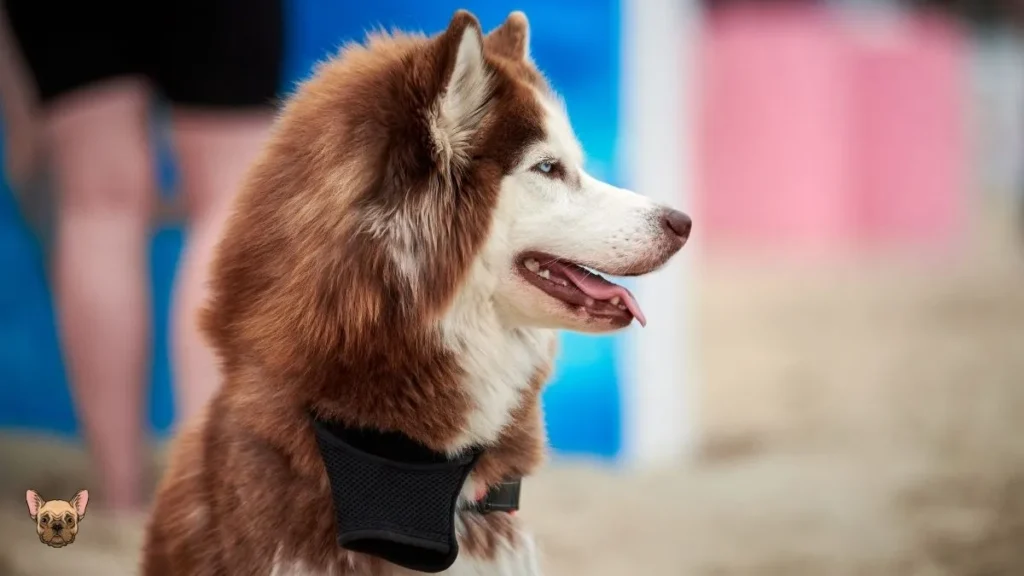
Siberian Husky from Working Group!
What is a Working Group in brief?
The Working Group is a category of dogs used for sledding, carting, dogsled racing, weight pulling, and other canine jobs.
The Working Group’s breed was initially bred to assist humans in tasks such as herding sheep, pulling carts, and sledding.
Average Sizes and Lifespan of The Breed
Height:
Males 21-23.5 inches (53-60 cm)
Females 20-22 inches (51-56 cm)
Weight:
Males 35-60 pounds (16-27 kg)
Females 30-50 pounds (14-23 kg)
12-15 years
The Temperament of The Siberian Husky
A typical Siberian Husky is an alert, friendly, outgoing, and intelligent dog.
They are gentle with children and adults alike and are often described as being “like a big teddy bear.”
Siberian Huskies are still working dogs at heart despite their friendly nature, and they have a strong prey drive.
Level of Trainability
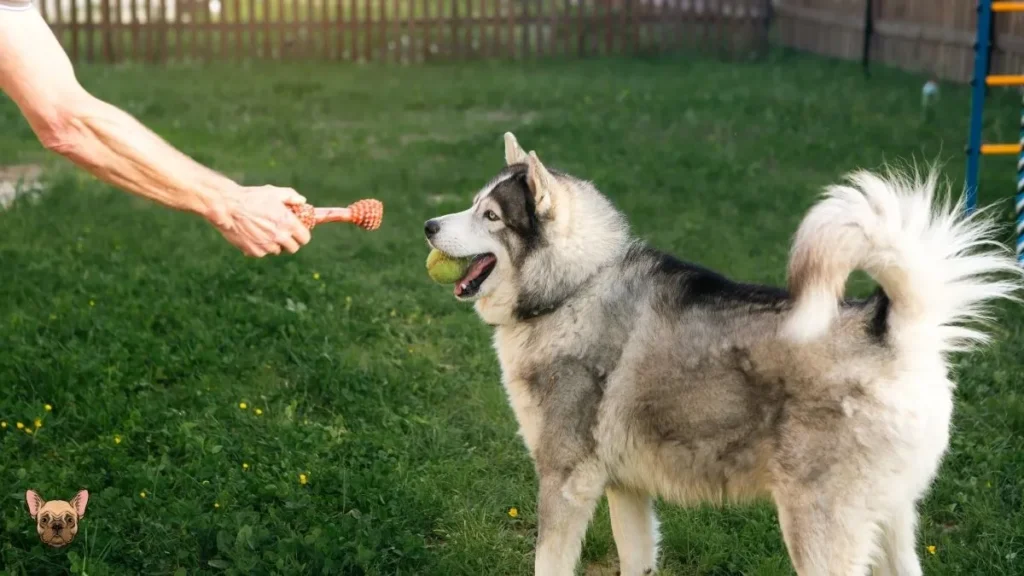
The Siberian Husky is an intelligent breed, but they can also be quite stubborn.
They are notorious for being escape artists, and owners must be diligent in keeping them contained.
Siberian Huskies require firm, consistent training from the experienced owner to reach their full potential.
Easy to Train
like other breeds at an early age, Siberians can be trained very quickly.
Siberians are also breeds that excel in sports such as agility, obedience, and flying disc competitions.
We earn a commission if you click this link and make a purchase at no additional cost to you.
Siberian owners who want to show their dog in the ring will need to put in a lot of work as Siberians are not the easiest breed to get into conformation shows.
Siberian Huskies are a versatile breed and can be successful in various activities.
These activities include dogsledding, racing, carting, weight pulling, and skijoring.
Siberian Huskies are widely considered one of the most beautiful dog breeds.
But what many people don’t realize is that they are also one of the most high-energy breeds.
They’re always on the go, and they want to be outside with you or in front of your house as much time as possible!
Siberian training is essential to prevent your dog from becoming bored and destructive.
You can’t just get a Husky puppy and expect it to be an expert at everything.
Siberian Huskies are intelligent dogs, and they need to be challenged mentally and physically.
If you’re not up for the challenge of Siberian training, then this breed is probably not the right fit for you.
But if you’re willing to put in the work, you’ll be rewarded with a loyal, loving companion who will bring joy to your life for many years to come.
Intelligence Level for Siberian Huskies
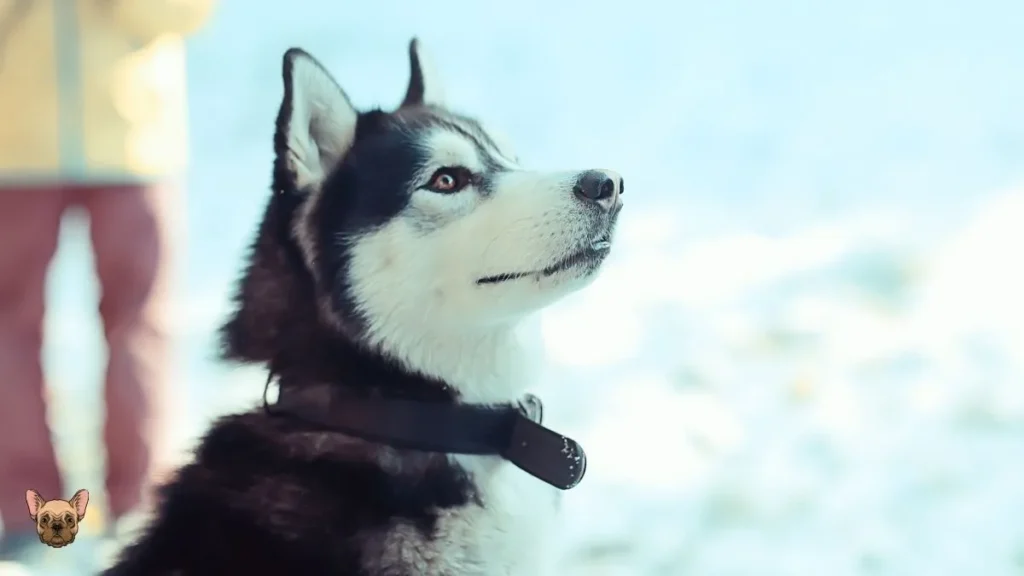
Intelligence level among dogs varies just like it does in humans.
Like the Siberian Husky, some breeds were bred to make decisions and work all day independently.
Like the Labrador Retriever, other breeds were bred to follow orders and work closely with humans.
But, whether a dog is high or low on the intelligence scale, they all need some form of mental stimulation to stay happy and healthy.
Dogs who don’t get enough brain Exercise often make up their work – projects you probably won’t approve of, such as digging and chewing.
The good news is that are many ways to give your dog a brain workout.
Obedience training, interactive dog toys, dog sports, and careers such as agility or search and rescue are great options.
So, whatever your dog’s intelligence level, give them the mental stimulation they need to lead a happy life.
Prey Drive
Dogs are amazing creatures, and they come in all shapes and sizes.
But did you know that some dogs are bred to chase and even kill other animals?
It’s true!
These dogs have a “prey drive,” and it’s an inborn desire to chase (and sometimes kill) smaller animals.
Prey drive is strong in some dogs, while others may only have a mild interest in chasing.
Anything that moves quickly can trigger the prey drive, including cats, squirrels, and even cars!
If you have one of these dogs, it’s essential to keep them on a leash or in a fenced area when they’re outdoors.
We earn a commission if you click this link and make a purchase at no additional cost to you.
You’ll also need a high, secure fence around your yard to keep them safe.
Prey drive isn’t a problem for all dogs, however.
Some breeds, such as Siberian Huskies, were bred for hunting birds.
These dogs generally don’t have a strong prey drive and are less likely to chase smaller animals.
So, if you’re looking for a dog that won’t chase your cat or hamster, a Siberian Husky might be a good fit for you!
Mouthiness Is Possible
The potential for mouthiness is standard in most breeds during puppyhood.
For example, Siberian Huskies are known to be a particularly mouthy breed.
Mouthy dogs are man’s best friend.
They tend to nip, chew, and play-bite (a soft, painless bite that doesn’t puncture the skin).
To keep these furry friends under control, it is essential for humans not only to teach them whatnot but also to understand how different behaviors affect one another to make sure there isn’t any biting when someone does something wrong or before an event, such as veterinarian visits where shots, etc.,
We earn a commission if you click this link and make a purchase at no additional cost to you.
Mouthy breeds tend to enjoy a game of fetch and a good chew on a toy that’s been stuffed with kibble and treats.
However, with proper training and socialization, most mouthy dogs can learn to control their urges and become loving, gentle companions.
Tendency To Bark
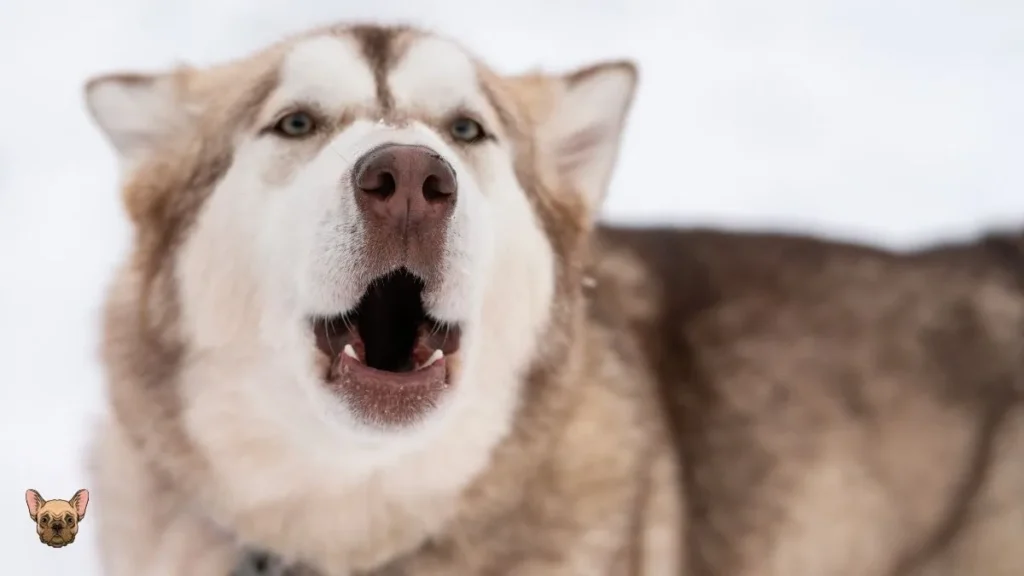
Some dog breeds are known for their vocalizations more than others.
You should know that they tend to bark or howl if you’re thinking about getting a hound, such as a beagle or basset hound.
This can be Music to your ears, or it could be maddening, depending on your perspective.
If you’re considering a watchdog, such as a Doberman pinscher or German shepherd, you should know that they will often bark at strangers.
This can be helpful if you live in an area with crime, but it may not be ideal if you have close neighbors.
If you live in an urban area with noise restrictions, you may want to consider a quieter breed of dog.
Some breeds, such as the Siberian husky, are known for being relatively quiet.
However, it’s essential to keep in mind that all dogs are individuals, and even the quietest dog breed can sometimes be vocal.
Ultimately, it’s essential to choose a breed compatible with your lifestyle.
Possibilities for Wanderlust
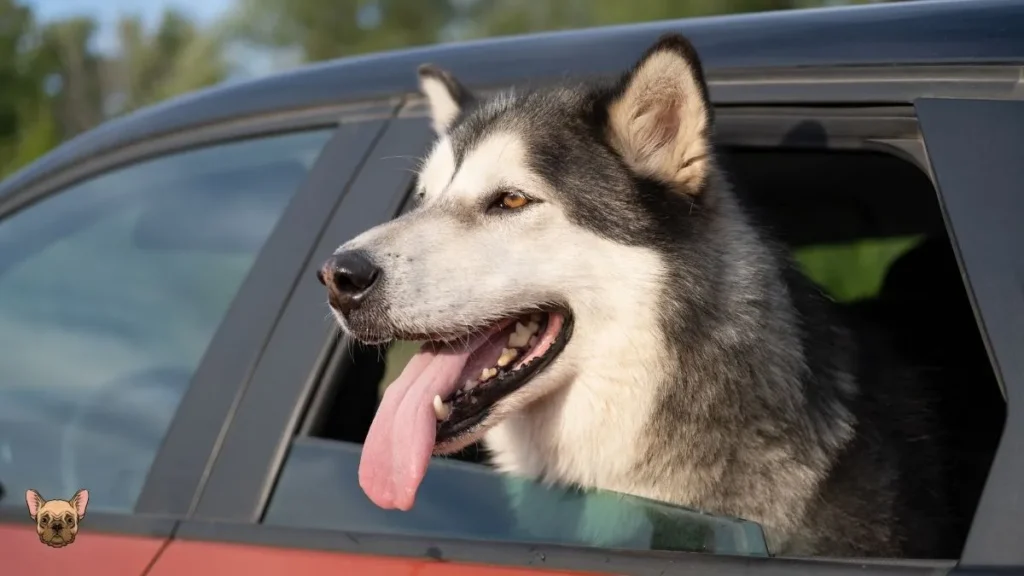
Some breeds are more free-spirited than others.
Nordic dogs such as Siberian Huskies were bred to range long distances and given a chance, and they’ll take off after anything that catches their interest.
And many hounds must follow their noses–or that bunny that just ran across the path–even if it means leaving you behind.
If you’re looking for a dog who will stick close to your side, it’s best to choose a breed with less wanderlust potential.
Breeds initially bred for hunting or herding are often good choices, as they have instinctual solid drives to stay close to their pack.
However, whatever breed you choose, remember that all dogs need daily exercise and plenty of opportunities to run and play.
We earn a commission if you click this link and make a purchase at no additional cost to you.
Even the most free-spirited dog can learn to stay by your side with enough exercise.
The Personality of The Siberian Husky
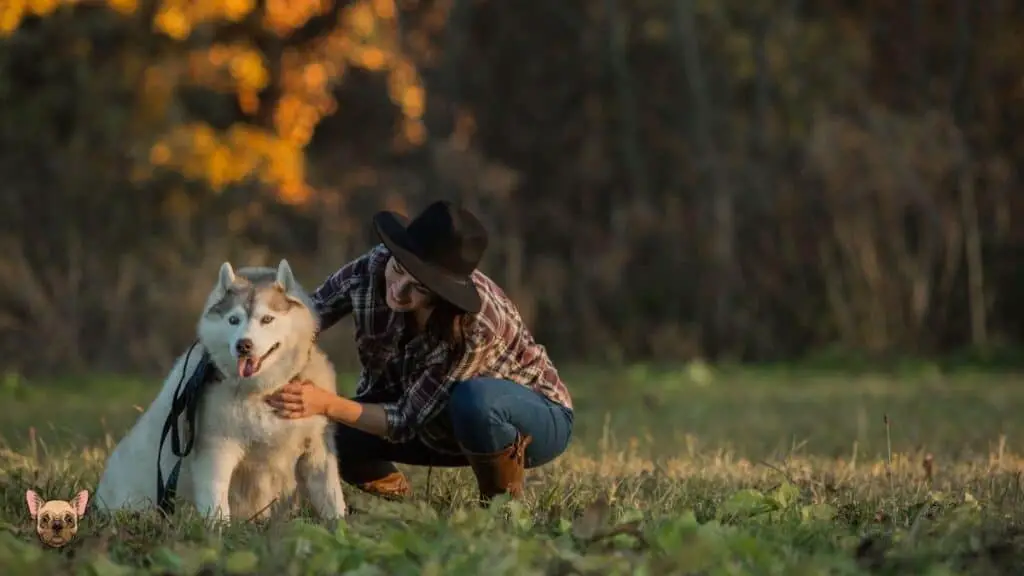
Level of Energy
Siberian Huskies are a high-energy breed that requires a lot of exercises.
Without proper outlets for their energy, they can become bored and destructive.
Daily walks or runs are a must for this breed, and access to a large fenced-in yard where they can run and play.
Barking Level
Siberian Huskies are not known for being barkers, but they do howl rather than bark.
Howling is a form of communication for this breed, and they will often “sing” along with sirens or other noises.
Mental Exertion Demands
The Siberian Husky is an intelligent breed, but they do not require as much mental stimulation as some other breeds.
They are content to lounge around the house or yard and do not need a lot of toys or games to keep them occupied.
Dietary Requirements
Siberian Huskies are relatively easy to please when it comes to food, and they do not have any specific dietary requirements.
A portion of high-quality dry dog food is all that is needed to keep this breed healthy and happy.
Some of the great Images about Siberian Huskies you can find below:
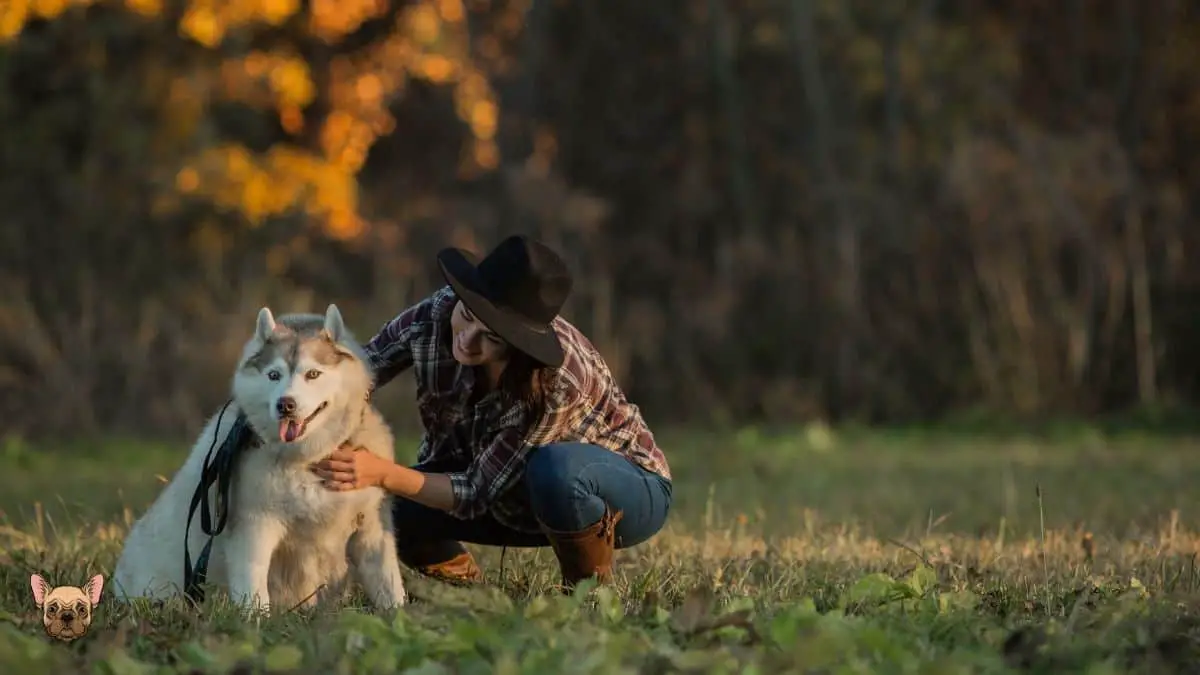
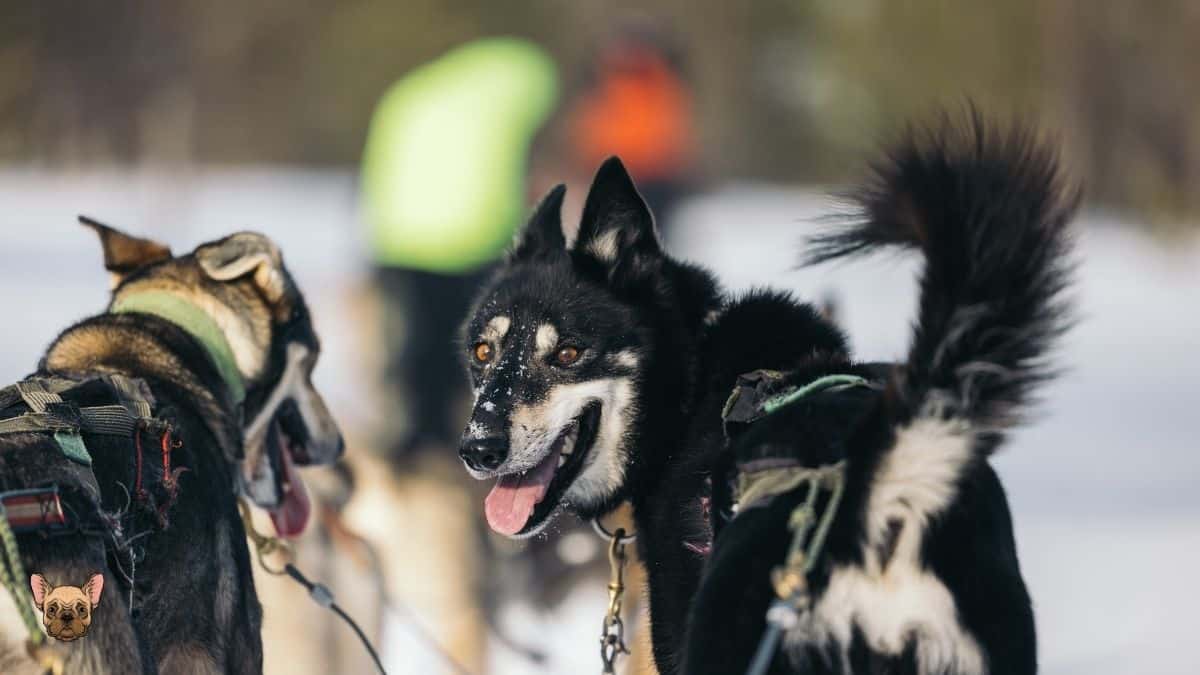
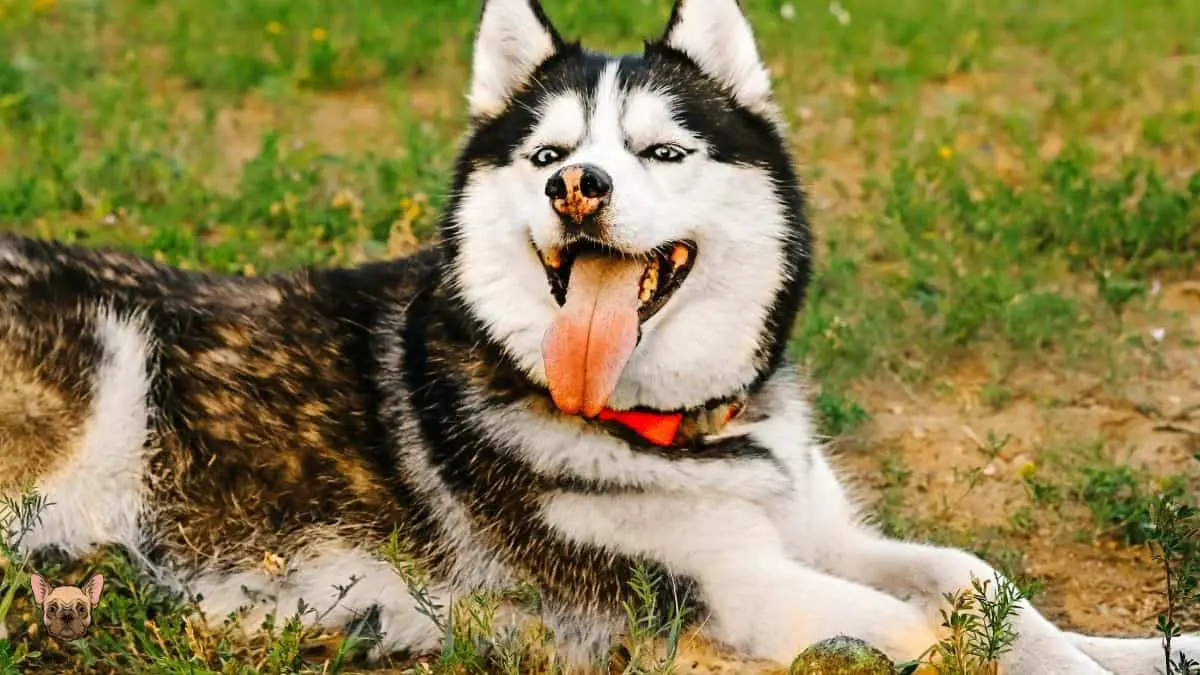
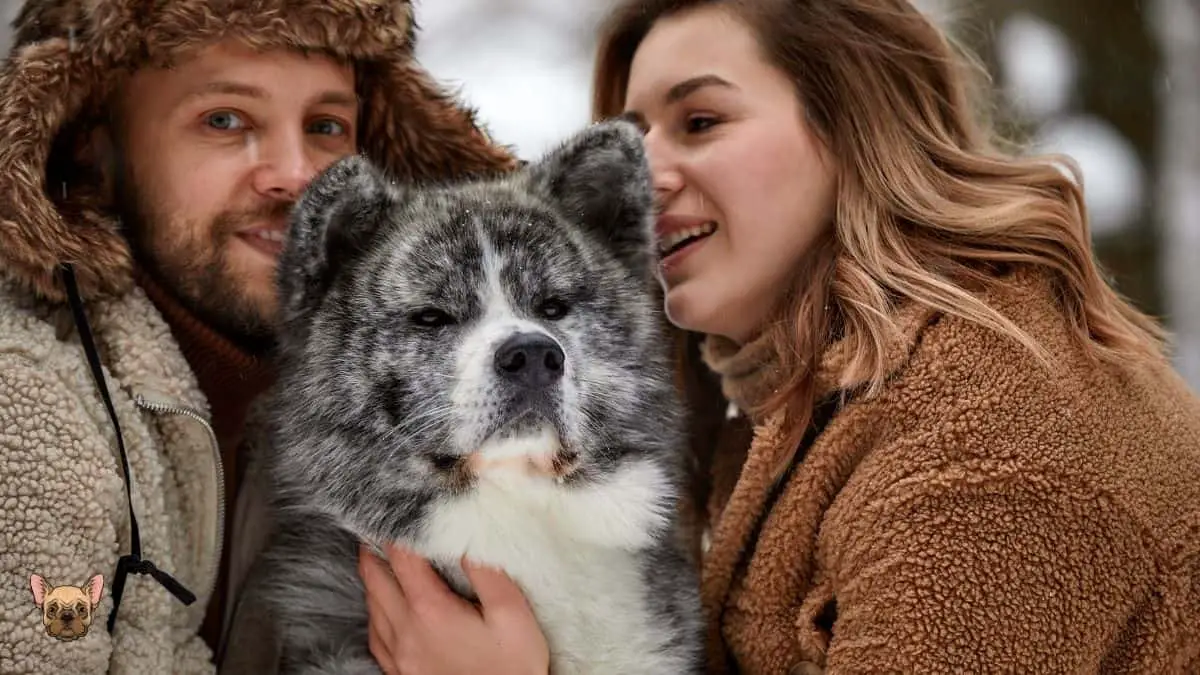
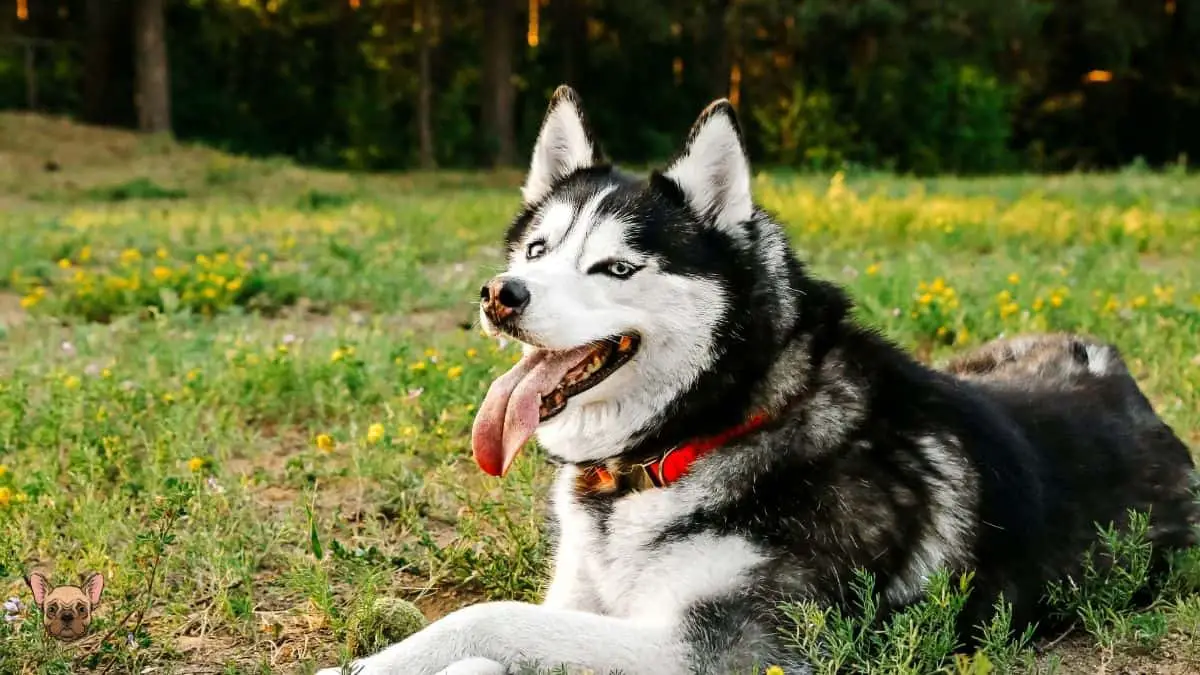
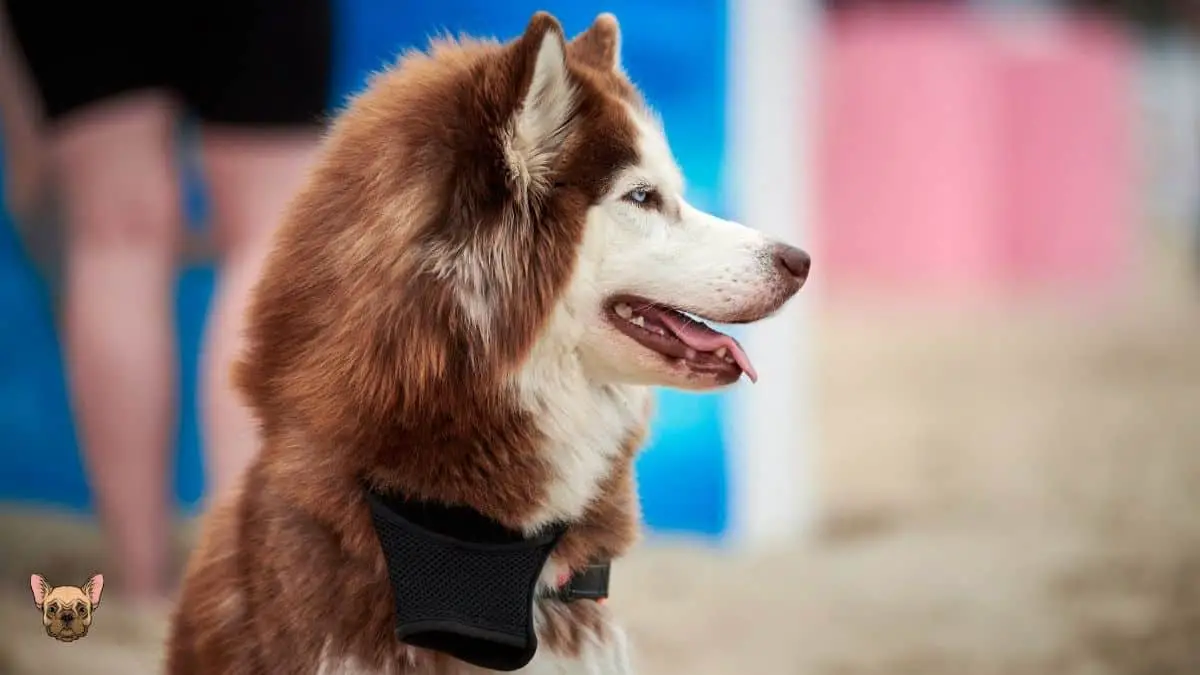
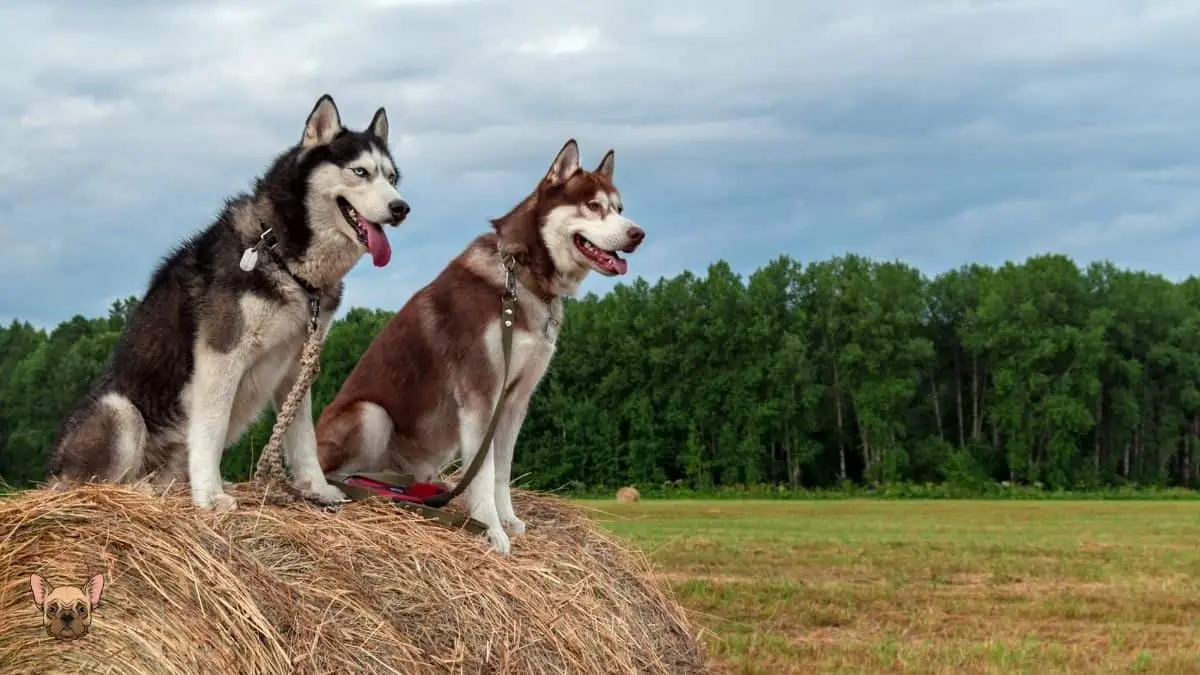
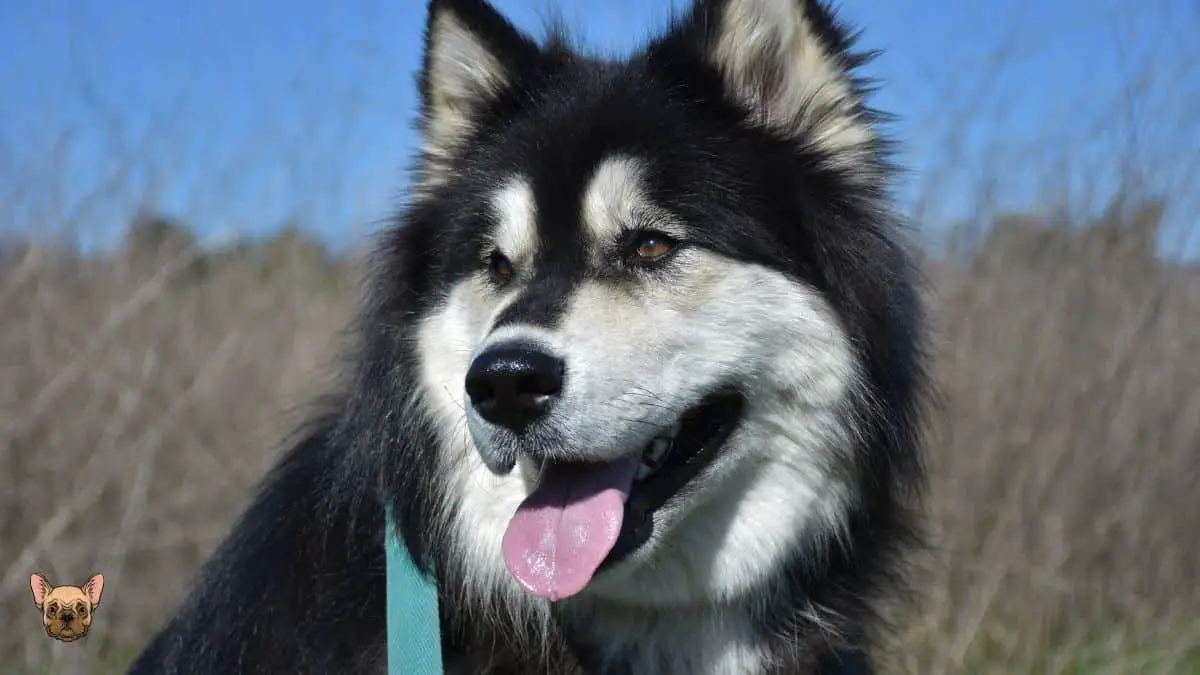
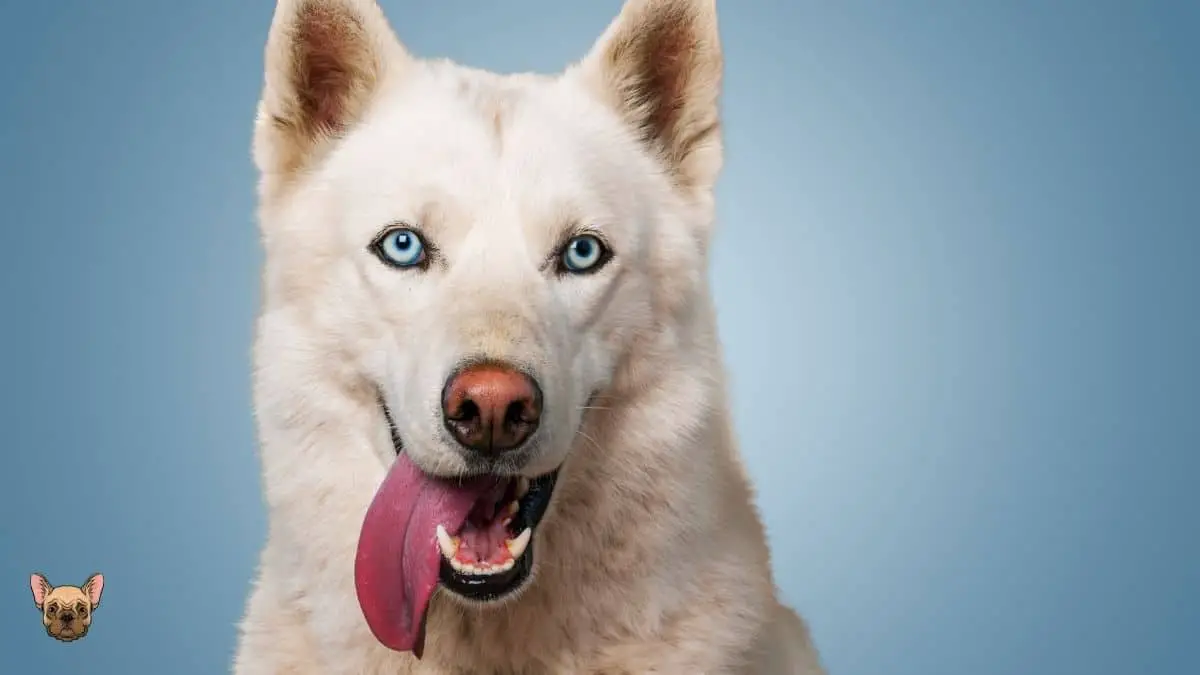
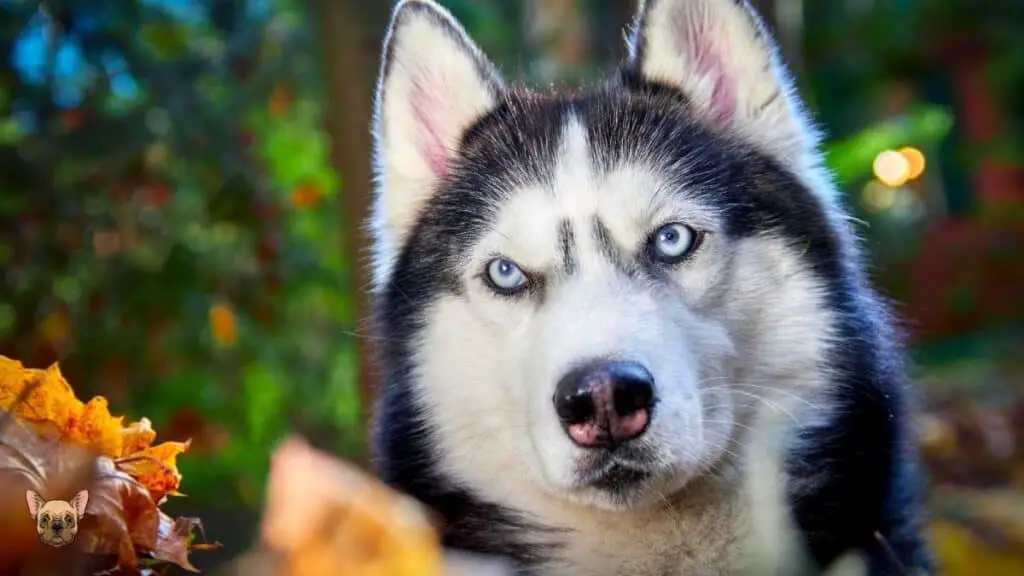
Siberian Husky Breed Characteristics [About Friendliness]
Friendliness in All Aspects
The Siberian Husky is a friendly, versatile dog breed that excels in several activities.
This medium-sized dog breed is built for endurance and strength, from sledding to dogsledding, racing to work.
While the Siberian Husky is not typically considered a guard dog or watchdog, their alertness and tendency to howl when something’s amiss make them good candidates for both roles.
The Siberian Husky is an active, intelligent dog breed that loves to stay busy.
If you’re looking for a couch potato, this is not your breed.
The Husky needs daily physical and mental exercise to stay happy and healthy.
Siberian’s With Family
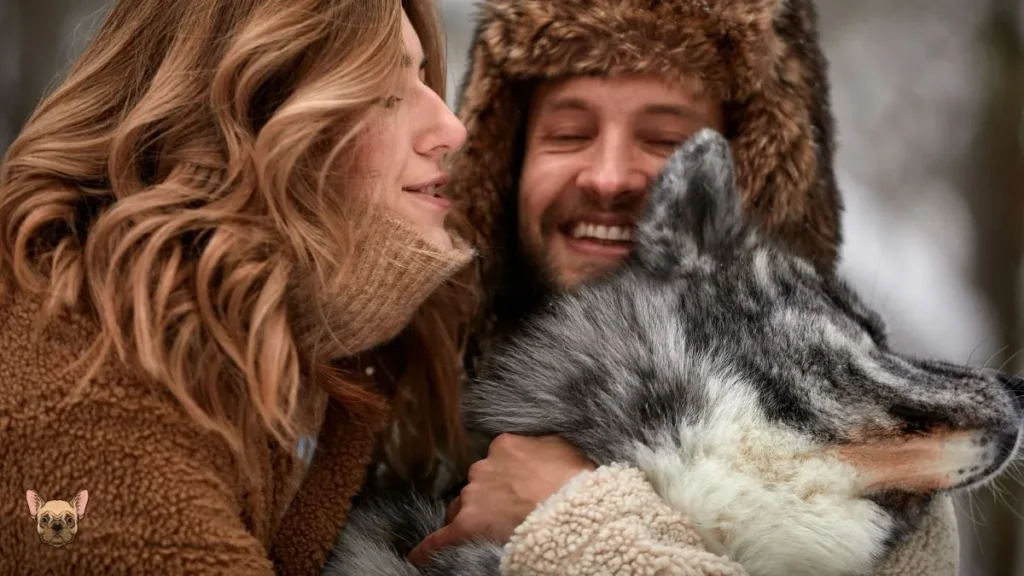
Siberian Huskies are notoriously independent and aloof, even if the same person has raised them since puppyhood.
This is likely due to their origins as working dogs in colder climates, where they had to fend for themselves more often than not.
Siberian Huskies were bred to be fiercely independent, and this trait has been carried through to today’s generations.
However, some Siberian Huskies bond closely with one person and are indifferent to everyone else.
They were raised inside a home with people around and feel more comfortable with humans.
Siberian Huskies raised in homes with other dogs are more likely to be affectionate towards the whole family.
Siberian’s With Kids
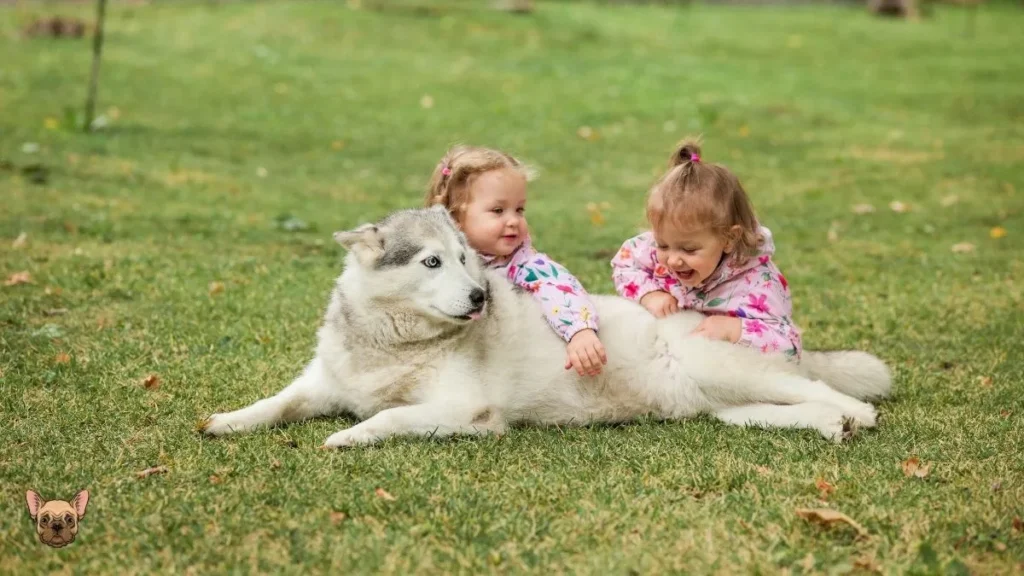
Siberian Huskies are known for being gentle with children.
They are also sturdy enough to handle the heavy-handed pets and hugs they can dish out.
Siberian Huskies have a blasé attitude toward running, screaming children.
Siberian Huskies are also considered good with children because of their size.
American Staffordshire Terriers (which are considered Pitbulls) are another breed of dog that is good with children.
Small, delicate, and potentially snappy dogs such as Chihuahuas aren’t always so family-friendly.
Siberian’s With Dogs
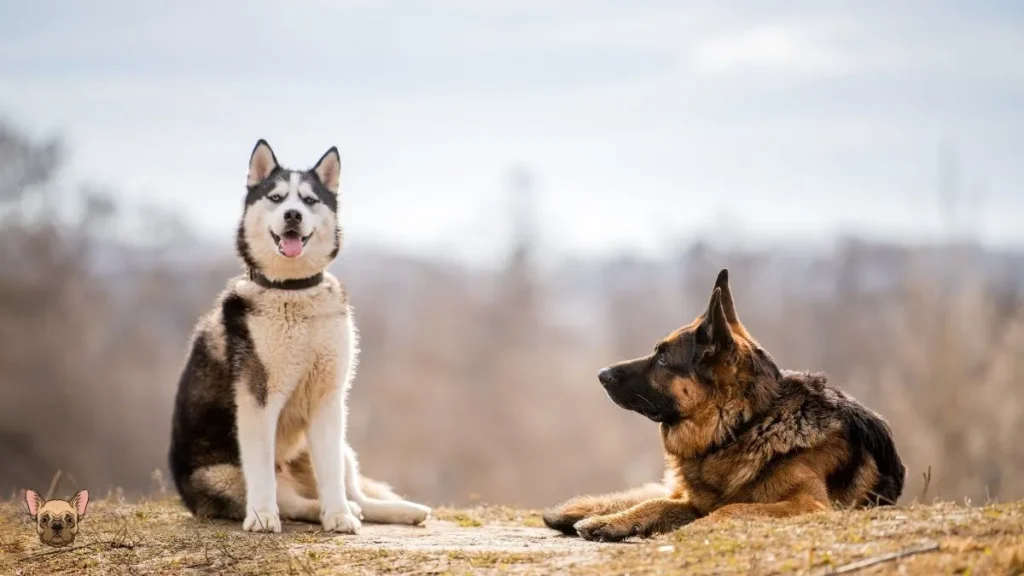
Siberian Huskies are one of the most friendly dog breeds, but they’re not always good with other dogs.
Siberian Huskies who grew up around other dogs are more likely to be good with them as adults, but they might not be the best choice if you’re looking for a doggy playmate for your Poodle.
Some experts believe that Siberian Huskies’ friendliness toward humans may be related to their history as working dogs.
For centuries, they were bred to work alongside humans in cold climates, and they may have developed a strong bond with their handlers as a result.
Siberian Huskies are still popular working dogs, but they’re also cherished family pets.
Although they might not be the best choice for everyone, their loyalty and affection make them hard to resist.
Attitude Toward Strangers Is Friendly
Attitude toward strangers is one of the many things that differ between dogs.
Some dogs are socialized and exposed to many different types, sizes, ages, and shapes of people as a puppy will respond better to strangers as an adult.
Other dogs may be shy or even aggressive.
However, no matter the breed, a dog who was well socialized as a puppy will respond better to strangers than one who wasn’t.
For example, Siberian Huskies are often shy around strangers, but if they were well socialized as puppies, they’d be more likely to greet guests with wagging tails and nuzzles.
Remember that even friendly dogs should stay on a good, strong leash like this in public!
Adopts Aspect
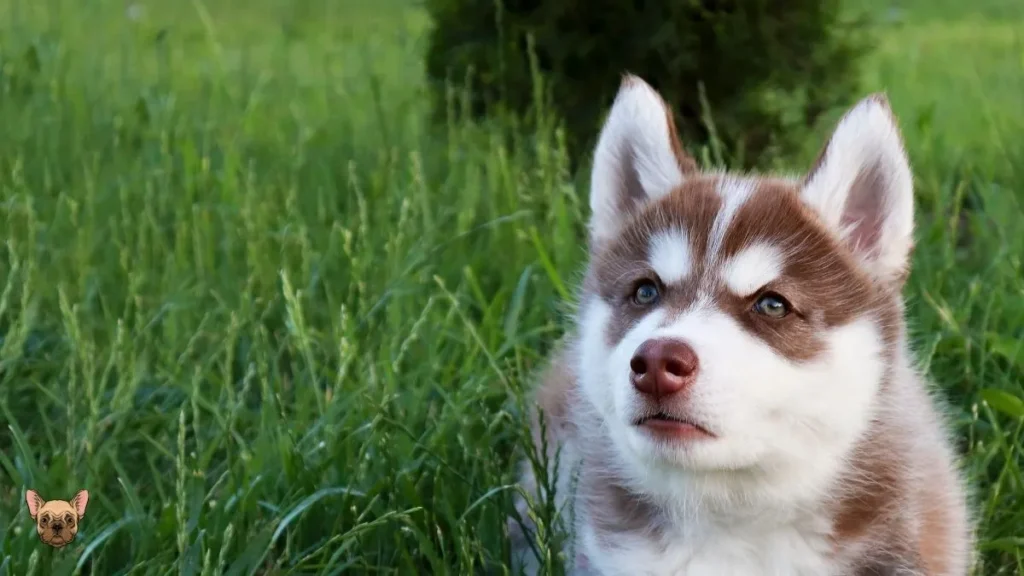
Ability to Adapt
The Siberian Husky is a breed originally bred in the cold, snowy environment of Siberia.
They’ve since adapted to living all over and can be found wherever plenty is going on!
This acute ability makes them excellent city dogs and country ones – just don’t forget about their needs for shade (and water).
The beautiful and loyal breed, the Siberian Husky, needs plenty of exercises to be happy.
They’re also working dogs at heart, so they may not do well with only sitting around all day!
For Beginners!
Some dogs are better at training than others; they take to it more efficiently and have an easier-going personality.
You can’t keep them down for long. If you make a mistake, they’ll bounce back and show their resilience!
Some dogs are just hard to handle, mainly if you’re not used to having such an active and stubborn animal in your life.
While it is true that every dog has its personality, you’ll get your best match if you take into account what kind of animal would be most compatible with yours when choosing a new pet.
For novice dog owners, a good choice might be a Siberian Husky.
These dogs are Good For Novice Owners and have a tractable temperament.
Though they’re independent thinkers, they’re also eager to please their owners.
If you’re looking for a dog that’s easy to train and doesn’t require much hands-on care, the Siberian Husky is a good choice.
Being Alone
While most dogs form strong attachments to their families and enjoy spending time with them, some breeds are more prone to anxiety and even panic when left alone.
An anxious dog can be very destructive-barking, chewing, whining, and otherwise causing mayhem.
Siberian Huskies do best when a family member is home during the day or if you can take the dog to work.
Breeds that are particularly prone to separation anxiety include the Siberian Husky, which was bred to work in packs, and the Labrador Retriever, known for its friendly and outgoing nature.
If you’re considering getting one of these dog breeds, it’s essential to ensure that you can provide the attention and companionship they need.
Otherwise, you may deal with a very destructive and unhappy pup.
Tolerates Cold and Hot Weather
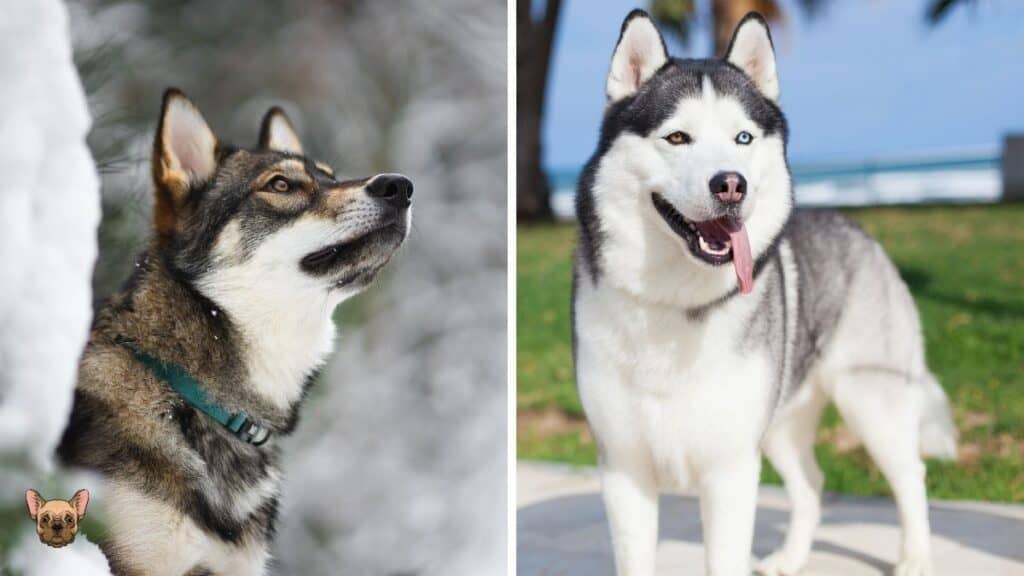
Tolerates Cold Weather
It’s hard to beat a dog in an adorable sweater, but more than just fashion is at stake for these breeds.
Short-coated dogs like Greyhounds need their coats because they don’t have much body fat and can easily fall victim to the cold weather outside – so make sure you get them something warm!
You’ll be glad that we told you about this excellent coat option from Patagonia; it will keep your pup comfortable no matter what activity he decides on during wintertime walks (whether hiking up mountains or taking casual strolls down the avenue).
You can find a great jacket for your dog here!
We earn a commission if you click this link and make a purchase at no additional cost to you.
Tolerates Hot Weather
While all dogs are susceptible to heatstroke, some breeds are more tolerant of hot weather than others.
If you live in a warm climate or looking for a dog who can handle spending time outdoors in the summer heat, consider a Siberian Husky.
These dogs were bred to work in cold climates, and their thick, double coats provide insulation against both hot and cold weather.
They also have high pain tolerance, so they’re less likely to show discomfort when hot outside.
However, it’s important to note that Huskies still require access to shade and plenty of water when spending time in the heat.
Breeds with Short Noses
While all dogs pant to cool themselves off, short-nosed breeds like Bulldogs and Pugs have a more difficult time doing so.
This is because they have a smaller surface area for evaporation, and they can’t take in as much air through their noses.
As a result, these breeds are more susceptible to overheating and need to be kept cool in warm weather.
If you live in a hot climate or plan on exercising your dog in the heat, it’s essential to choose a breed with a longer nose.
Level of Sensitivity
As any dog owner knows, each canine companion has a unique personality.
Some dogs are quick to pick up on commands, while others take longer to learn.
But what about a dog’s sensitivity level?
Sensitivity level refers to how a dog responds to loud noises, chaotic environments, and changes in routine.
And believe it or not, this trait can vary significantly from dog to dog.
For example, some dogs will let a stern reprimand roll off their backs, while others take even a dirty look to heart.
So what does this all mean for you?
If you have young kids, throw lots of dinner parties, play in a garage band, or lead a hectic life, you might want to go with a low-sensitivity dog.
These “easygoing,” “tolerant,” “resilient,” and even “thick-skinned” pups can better handle noisy, chaotic households and inconsistent routines.
Breeds that tend to fall into this category include the Siberian Husky, Golden Retriever, Labrador Retriever, and Bulldog.
On the other hand, if you’re looking for a cuddle buddy who’s always ready for a snuggle session, you might prefer a high-sensitivity dog.
Grooming
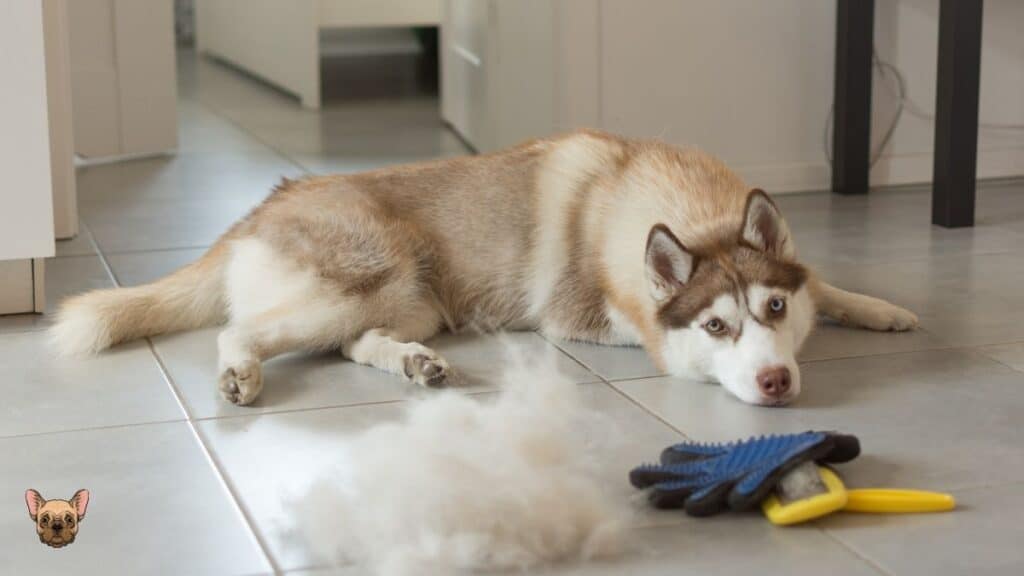
Shedding Level
If you’re planning on sharing your home with a furry friend, it’s essential to be aware that Shedding is simply a part of life with most dogs.
While some breed Shed very little, others blow their coat seasonally, and still, others shed year-round.
If you’re a neatnik, you’ll need to pick a low-shedding breed or relax your standards.
Some people find the seasonal Shedding of their dog’s coat bothersome, but it can be pretty beautiful.
For example, the Siberian Husky is a dynamic dog known for its thick coat and bountiful Shedding.
We earn a commission if you click this link and make a purchase at no additional cost to you.
During the warmer months, their coat will Shed heavily to prepare for the cold winter ahead.
While this may not be ideal for those who prefer a neat home, owning a Siberian Husky is simply part of owning it.
Shedding is just a fact of life with most dogs – so if you’re looking to add a furry friend to your home, be prepared to embrace the Shedding!
Drooling
Siberian Huskies are drool-prone dogs.
If you’re not prepared to have wet spots on your clothes, it’s best to steer clear of them.
Siberian Huskies are also very friendly and loving, so if you don’t mind the drool, they make great companions.
Just be sure to have a towel handy!
Grooming Level
If you’re considering adding a furry friend to your family, you might want to consider how much time you’re willing to spend on dog grooming.
Some breeds are what we like to call “brush-and-go” dogs.
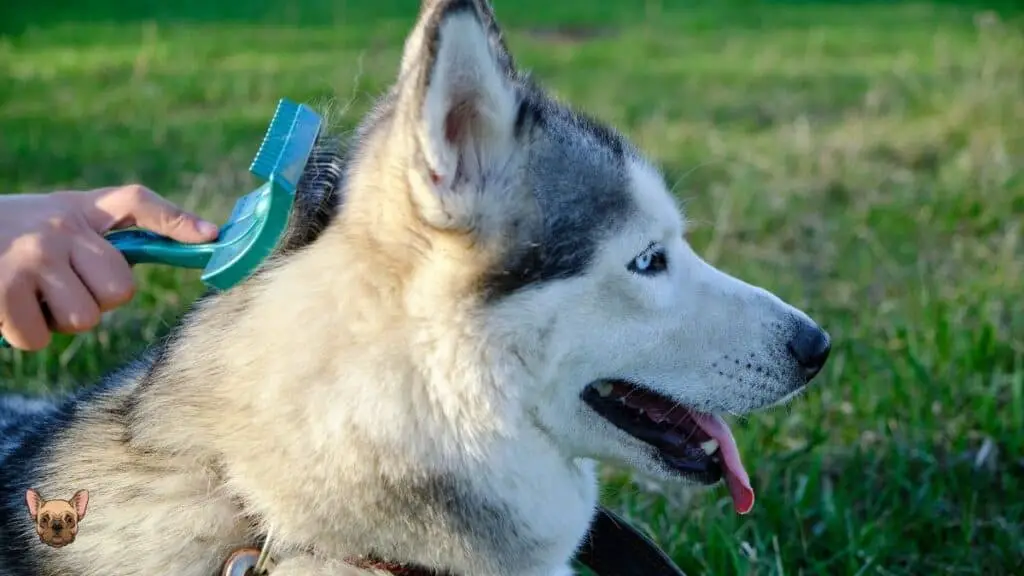
They don’t need special care beyond the occasional brushing to keep their coats healthy and free of tangles.
Other breeds, however, require regular bathing, clipping, and other grooming just to stay clean and healthy.
If you’re not prepared to invest the time or money required for proper grooming, you might want to choose a different breed.
For example, Siberian Huskies are beautiful dogs, but they require a lot of work to keep them looking their best.
We earn a commission if you click this link and make a purchase at no additional cost to you.
If you’re not up for the challenge, you might consider another breed that’s a little easier to take care of.
No matter what breed you choose, be prepared to spend some time (and maybe even some money) keeping your new best friend looking and feeling their best.
General Health of Siberian Husky
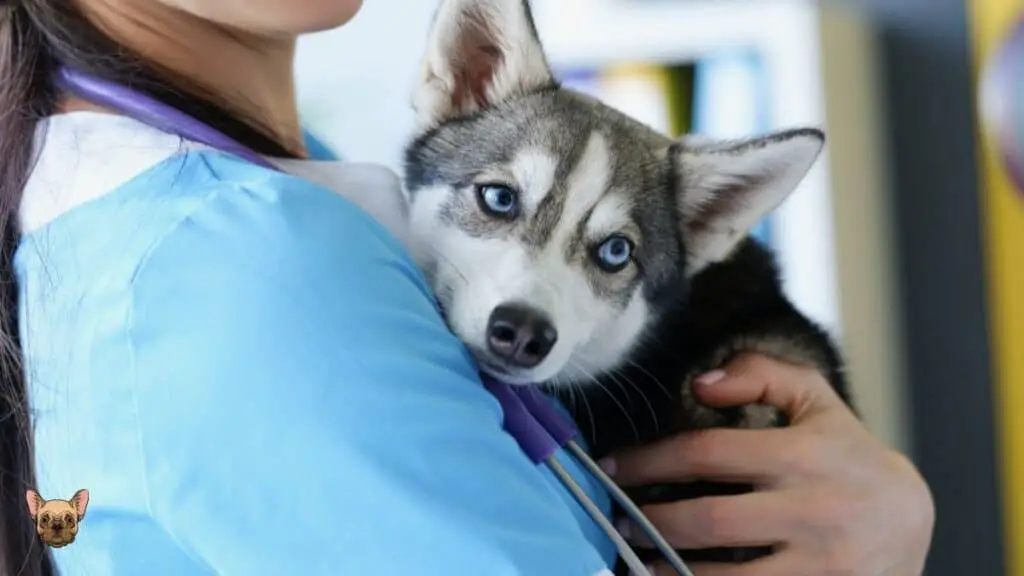
When you think of a Siberian Husky, you might picture a dog pulling a sled through the snow.
But did you know that these dogs are also at risk for specific health problems?
Because of incorrect breeding techniques, some breeds are susceptible to specific hereditary health issues, such as hip dysplasia.
It does not imply that every canine within a breed will get those diseases; it simply indicates that they are more likely to do so.
If you’re adopting a puppy, it’s essential to learn about its genetic issues.
You may also want to ask if your shelter or rescue has information about the physical health of your potential pup’s parents and other relatives.
Despite their increased risk for health problems, Siberian Huskies are still generally considered a healthy breed.
But as with all dogs, it’s essential to keep up with their vaccinations and routine vet check-ups.
So if you’re thinking of adding a Siberian Husky to your family, do your research first!
Siberian Husky Weight Gain Possibility
As an animal owner knows, not all breeds are created equal in diet and weight.
Like the Siberian Husky, some dogs have hearty appetites and tend to put on weight quickly.
As in humans, it is being overweight can cause health problems in dogs.
If you choose a breed that tends to gain weight, you’ll need to limit goodies, ensure they get enough activity, and divide their daily food portions.
Ask the veterinarian if you’re unsure about what type of food to feed your dog.
Obesity can cause a slew of different health issues and exacerbate existing.
So if you’re looking for a low-maintenance breed that won’t break the bank on doggy treats, you might want to steer clear of the Siberian Husky.
Size of Siberian Husky
The average Siberian Husky male weighs between 45 and 60 pounds, with females averaging 10 to 20 pounds less.
The breed’s height at the shoulder is 20 to 23.5 inches for males and 20 to 22 inches for females.
Siberian Huskies are considered medium to large breeds.
Siberian Husky Physical
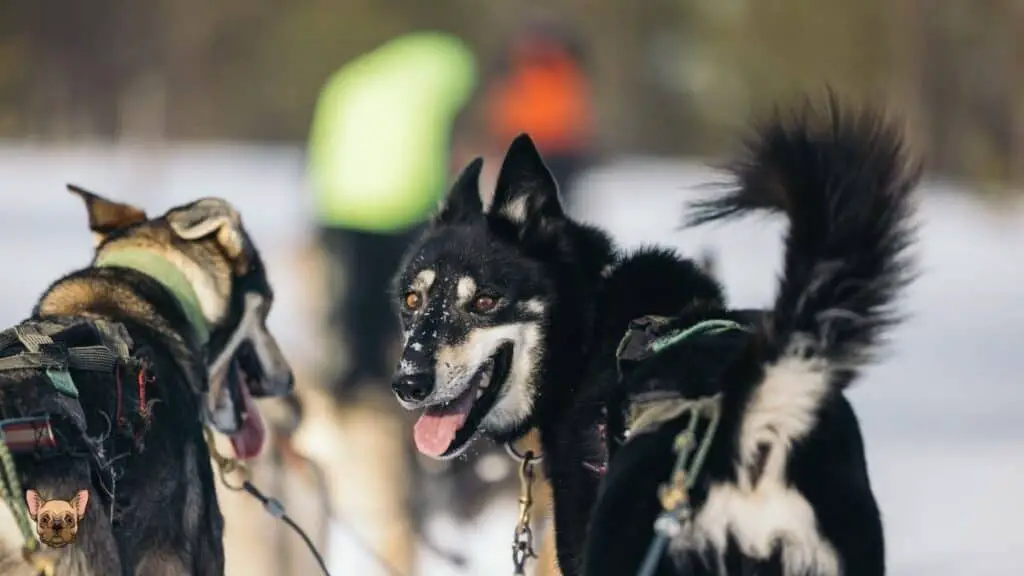
The Intensity of Siberian Husky
The Siberian Husky is a dog breed known for its intense stare and working ability.
Despite their rugged appearance, they are very friendly and good with children.
If you’re looking for a high-energy dog and love to play, then the Siberian Husky is excellent.
Siberian Husky Exercise Requirements
Some people believe that the Siberian Husky does not require a lot of exercises, but this is not the case.
A minimum of 30 minutes to an hour of exercise is necessary for this breed.
If you do not provide them with enough exercise, they may become destructive or start howling.
Without exercise, the Siberian Husky may become challenging to control its weight and become anxious or stressed.
Some other breeds may be content with a walk around the block, but the Siberian Husky needs more.
The Siberian Husky breed needs to run and should have the opportunity to do so daily.
If you do not have the time to take them for a run, you can invest in a dog treadmill.
This will allow them to get the exercise they need without you having to take them out.
Siberian Huskies are also known for being escape artists.
This means you will need to have a secure fence to keep them contained.
Siberian Husky’s Playfulness and Potential
Siberian Huskies are known for their playful and friendly nature.
They make great family dogs, but their high energy levels require plenty of space to run and play.
Huskies are also very intelligent, which can make them challenging to train.
We earn a commission if you click this link and make a purchase at no additional cost to you.
However, with consistent and positive reinforcement, they can learn to respond well to commands.
Overall, Siberian Huskies are loving and gentle dogs that make great companions.
Siberian Husky Breed In General
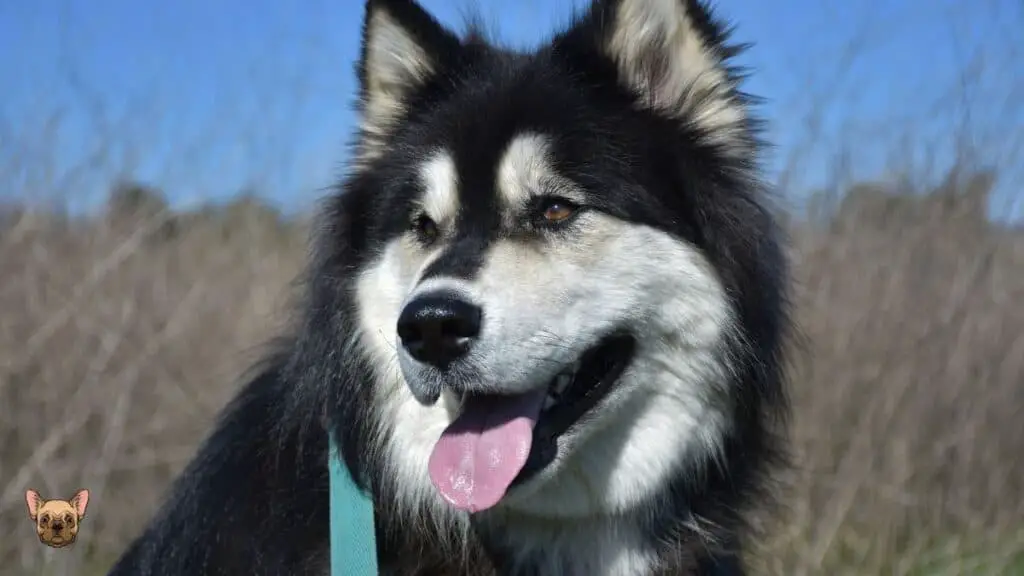
Siberian Huskies are a breed of dog known for their abilities as working dogs.
Sibes, as they are often called, were originally bred in Siberia to serve as sled dogs and working dogs in the harsh conditions of that region.
Today, they are still used for these purposes in some parts of the world, but they have also become popular as family pets in other parts of the globe.
Siberians are medium-sized dogs typically measure between 20 and 23 inches tall at the shoulder and weigh between 35 and 60 pounds.
The most distinguishing feature of this breed is their thick, double coat, which can be black and white, copper-red and white, grey and white, or pure white.
Siberian Huskies also have pointy, erect ears and almond-shaped eyes, typically blue, but can also be brown, green, or even one of each color.
This breed is brilliant, playful, and friendly, but it can also be stubborn and headstrong.
History of the Siberian Husky
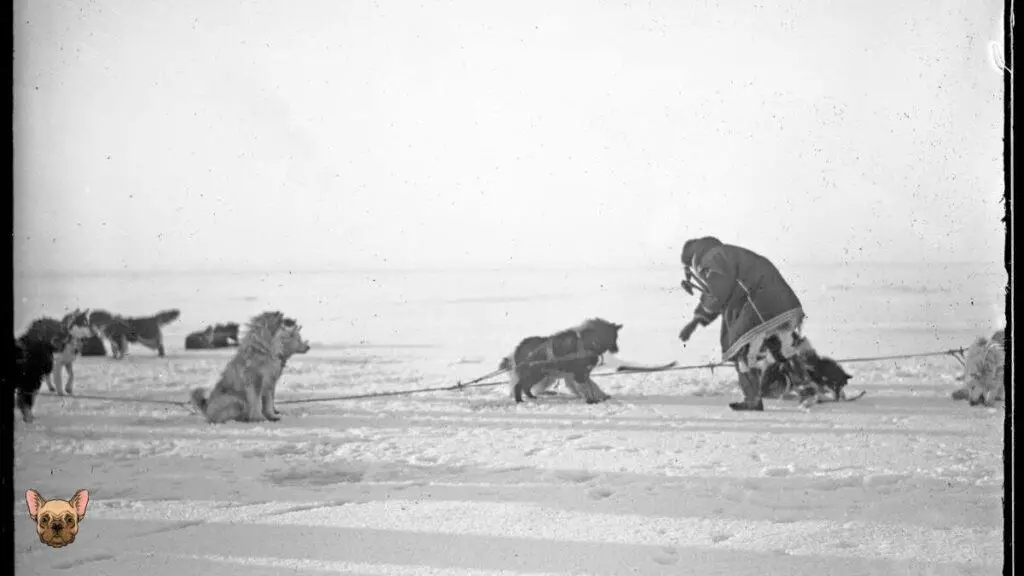
Siberian Huskies are a type of dog that was initially bred in Siberia.
The Chukchi people used them for sledding, and they are still used for this purpose today.
Siberian Huskies are also popular pets, and they are known for their friendly dispositions.
The Siberian Husky is a descendant of the wolf, and it is one of the oldest dog breeds.
The Husky’s ancestors were likely brought to Siberia by the people who migrated there from Central Asia.
The Siberian Husky was first bred in Siberia in the 1800s, and the first dogs were imported to Alaska in 1909.
Siberian Huskies are bred for their abilities as working dogs, and they are known for their strength, endurance, and speed.
They are also known for being intelligent and loyal.
Siberian Huskies are typically gentle and good-natured, but they can be willful if they are not given enough exercise.
Siberians Huskies Raced 340 Miles
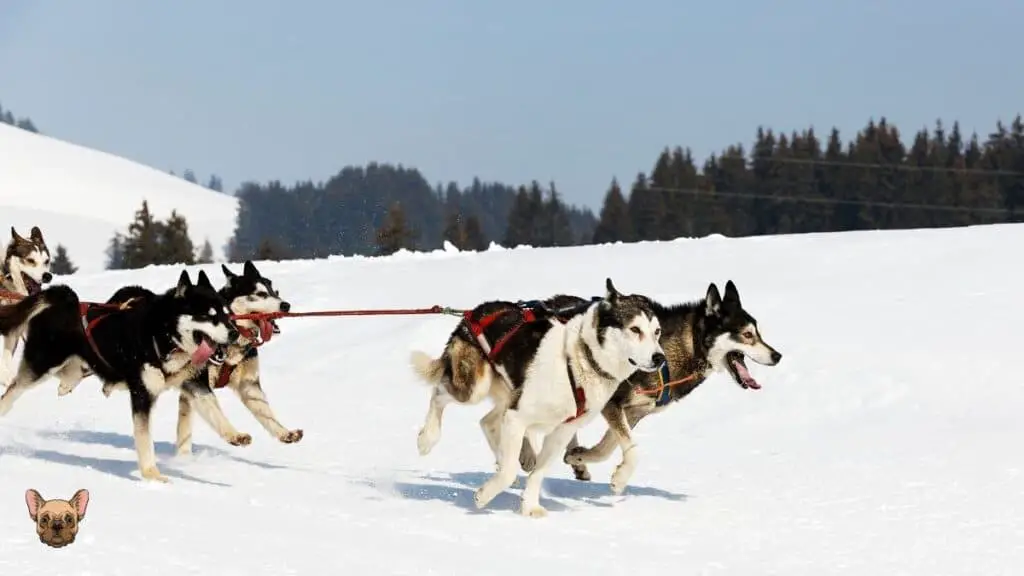
Siberian Huskies have a long and storied history in Alaska.
In 1925, a team of them famously raced 340 miles across the state in just under five days, becoming the first dogs to complete the Iditarod Trail Sled Dog Race.
Today, they’re still one of the most popular dog breeds in the state and are widely used in sledding, dog sledding, and skijoring.
In 1908, the Siberian Husky Club of America was founded, and the American Kennel Club officially recognized the breed in 1930.
Chukotka Sled Dogs
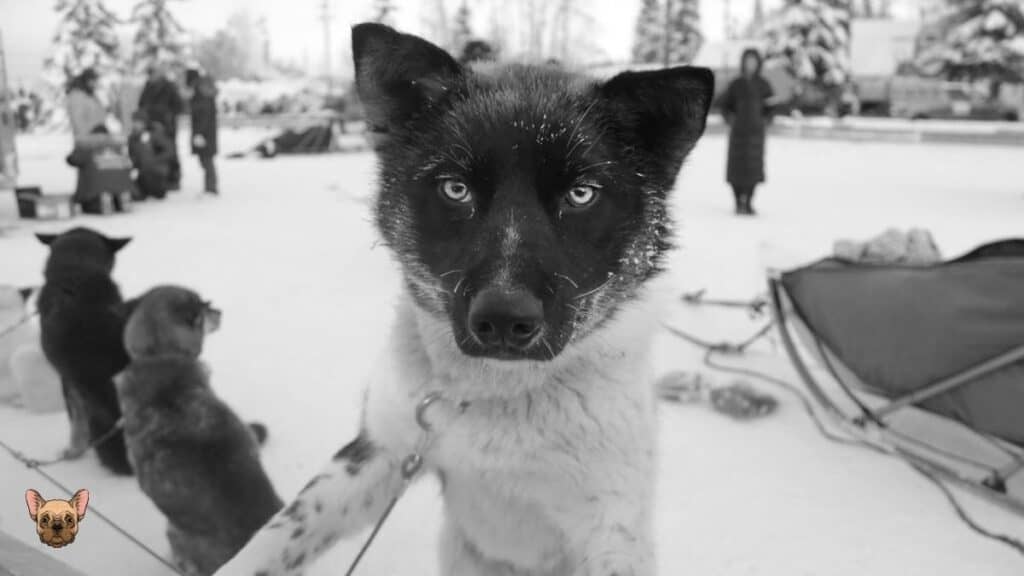
Chukotka sled dogs are a type of working dog used to pull sleds in the Chukotka region of Russia.
These dogs are known for their strength, endurance, and loyalty.
Siberian Husky and Chukotka Sled Dogs
Siberian Huskies and Chukotka sled dogs have a long and rich history.
These hardy breeds were used for centuries by the native people of Siberia and Chukotka to travel across the vast and rugged landscapes.
Also used them to haul heavy loads and pull toboggans or sleighs loaded with goods or supplies.
They were an essential means of transportation for hunting and trapping in winter.
The first record of Siberian Huskies in North America dates back to the early 1900s, when a group of prospectors brought a team of them to Alaska during the Klondike Gold Rush.
The dogs proved invaluable in helping the men travel across the snowy terrain and haul supplies.
During the Second World War, Siberian Huskies were used by the American military in Greenland and Alaska as part of the Arctic search-and-rescue efforts.
They proved to be invaluable in locating missing aircraft and personnel.
Today, Siberian Huskies and Chukotka sled dogs are still used for sledding and dogsledding.
Siberian Husky Feeding and Nutrition
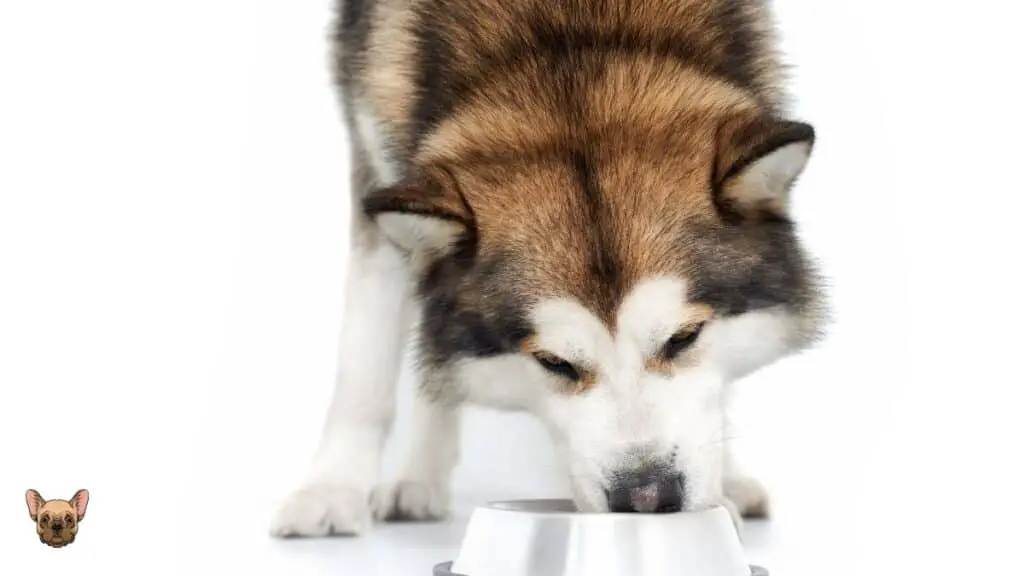
Siberian Huskies are a relatively easy breed to care for when it comes to feeding and nutrition.
The daily recommended caloric intake for an adult Siberian Husky is 1,500 to 2,000 calories, that’s means 1.5 to 2 cups of high-quality dry food per day.
This amount should be split between two to three meals per day.
Siberian Huskies are relatively active dogs, so they require a high protein and fat diet.
They are not picky eaters and will usually do well on various types of food.
However, there are a few things to keep in mind when feeding a Siberian Husky to make sure they stay healthy and happy.
First and foremost, it is essential to remember that Siberian Huskies are very active dogs.
They need a lot of exercises, both mental and physical, to stay healthy and happy.
Their diet needs to be high in protein and fat to help them maintain their energy levels.
A good quality dog food designed for active dogs will usually have all the nutrients a Siberian Husky needs.
However, it is always a good idea to check with your veterinarian to ensure you are feeding your dog the best food for their individual needs.
In addition to a portion of high-quality dog food, Siberian Huskies also need access to freshwater.
They are very active dogs and can quickly become dehydrated if they do not have enough water to drink.
Make sure always to have a bowl of freshwater available for your dog and refill it as needed.
Finally, it is essential to remember that Siberian Huskies are working dogs.
They were initially bred to pull sleds in cold climates and, as such, have a high tolerance for cold weather.
However, this does not mean they do not need a proper diet to stay healthy.
A diet that is too high in calories can harm a Siberian Husky’s health, so it is essential to find a balance that works for your dog.
Feeding a Siberian Husky the right food will help them stay healthy and happy for many years to come.
Siberian Husky Grooming In-Depth Detail
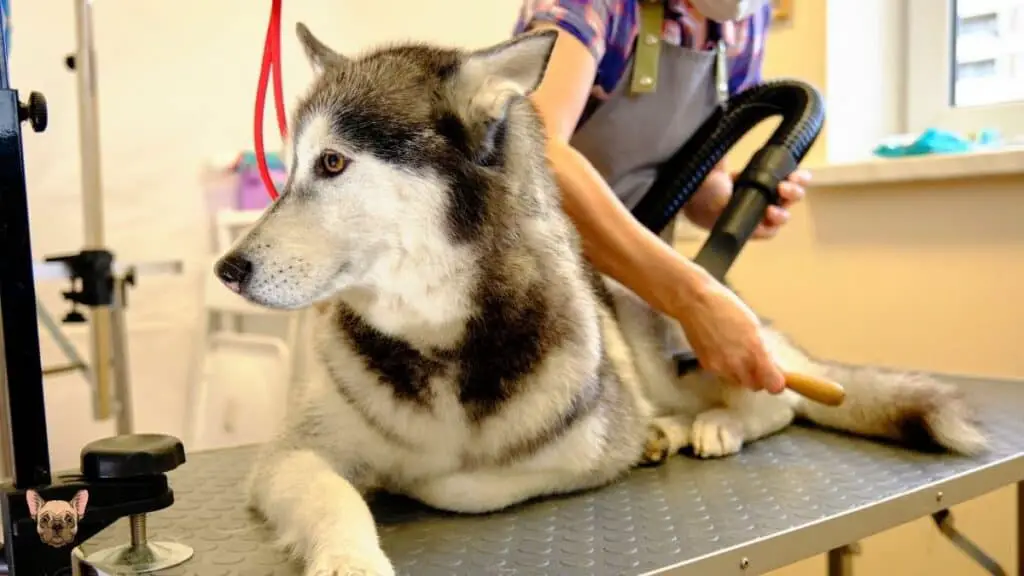
If you have a Siberian Husky, you know that they are a high-maintenance breed.
They require regular grooming to keep their coat healthy and looking its best.
This section will go over all the details of Siberian Husky grooming, including how often you should do it, what products to use, and more.
Siberians are clean dogs, and they do not require a lot of baths.
Bathing them too often can strip their coat of its natural oils, causing it to become dry and brittle.
A good rule of thumb is only to bathe your Husky when they are dirty or smell bad.
As for what type of shampoo to use, I recommend a quality dog shampoo designed for double-coated breeds.
When it comes to brushing, your Husky will need to be brushed at least once a week and more often if they have a long coat.
A good brush is a slicker brush, which can find at most pet stores.
In addition to brushing, you will also need to trim your Husky’s nails regularly.
If you do not keep them trimmed, they can start to curl under and cause your dog pain.
I recommend using a dog nail trimmer that is designed for thicker nails.
Finally, you will need to clean your Husky’s ears regularly.
This is important because their ears are very prone to infection.
I recommend using a cotton ball soaked in dog ear cleaner to do this.
So, there you have it – all the details on Siberian Husky grooming.
Remember to groom your dog regularly to keep them looking and feeling their best.
Siberian Husky Coat and Color
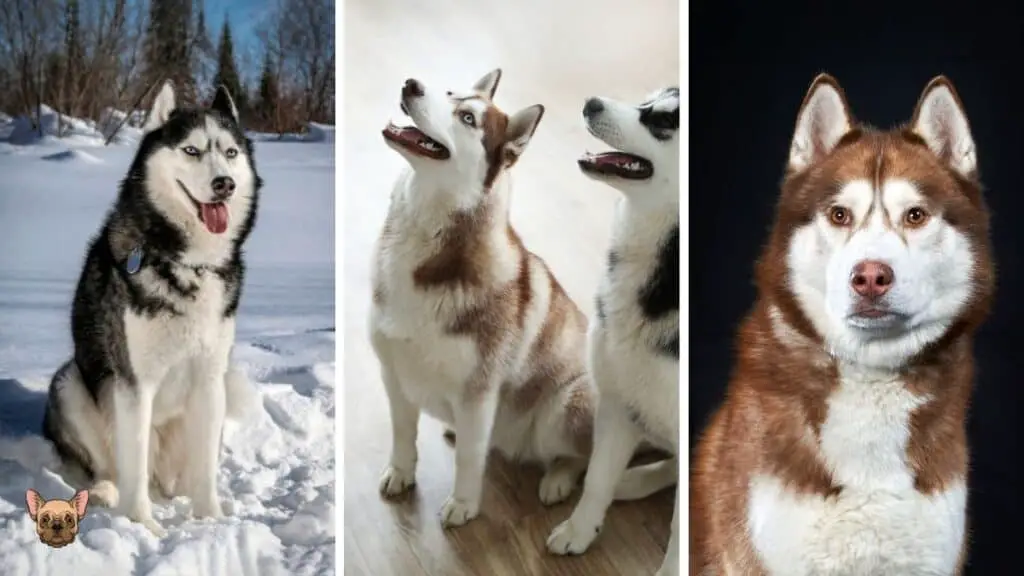
Most huskies have a double coat of fur that helps protect them from cold weather conditions.
The topcoat comprises long, straight guard hairs that help repel dirt and keep the undercoat clean.
The undercoat comprises shorter, denser hairs that insulate the dog against the cold and trap body heat.
Siberian Huskies shed their undercoats twice a year, usually in the spring and fall.
You may find that your dog is shedding more than usual during this time.
To help manage the shedding, brush your husky several times a week with a slicker brush or a de-shedding tool.
Huskies come in various colors, including black and white, gray and white, red and white, sable, and agouti.
Agouti huskies have alternating light and dark fur bands on each hair shaft.
Sable huskies are born with black fur that gradually lightens as they mature.
Siberian Husky Personality in Detail
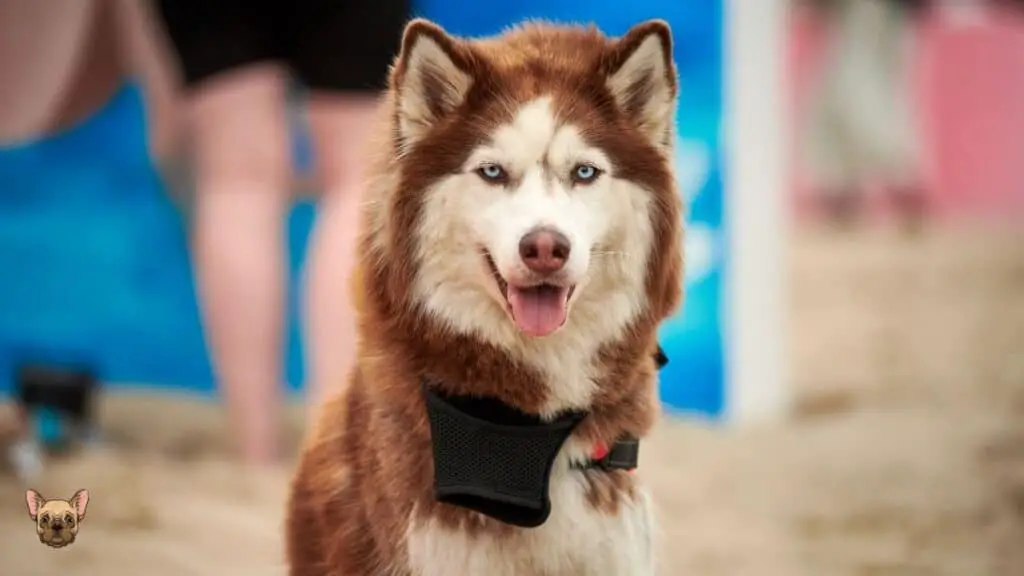
Siberian Huskies are one of the most popular dog breeds in the world.
They are also one of the most versatile, used for sledding, dogsledding, racing, carting, weight pulling, and skijoring.
But what makes them so unique?
Siberian Huskies are known for their thick coat of fur, which protects them from cold weather.
But their coat also has a softer undercoat, which helps to insulate them from the heat.
This makes them ideal for living in colder climates, as they can tolerate both extreme temperatures.
Their thick coats also make them deficient maintenance when grooming, as they do not require frequent baths or brushing.
Siberian Huskies are also known for their independent nature.
They are not typically a “people pleaser” breed and often prefer to do things their way.
This can make them challenging to train, but it also means brilliant and quick learners.
Siberian Huskies are also known for their friendly, outgoing personalities.
They love to meet new people and other animals, and they are usually very good with children.
Their social nature makes them excellent for families with kids or other pets.
Siberian Husky Highlights
- Siberian Huskies are a versatile working dog breed that originated in Northeast Asia.
- They are known for their thick coats, which protect them from cold weather conditions, and their abilities to pull sleds and work as watchdogs.
- Siberian Huskies were originally bred by the Chukchi people of Siberia, who used them to help with tasks such as pulling sleds and herding reindeer.
- In the early 1900s, the breed to Alaska was used in races such as the Iditarod Trail Sled Dog Race.
Siberian Husky Health In-Depth Detail
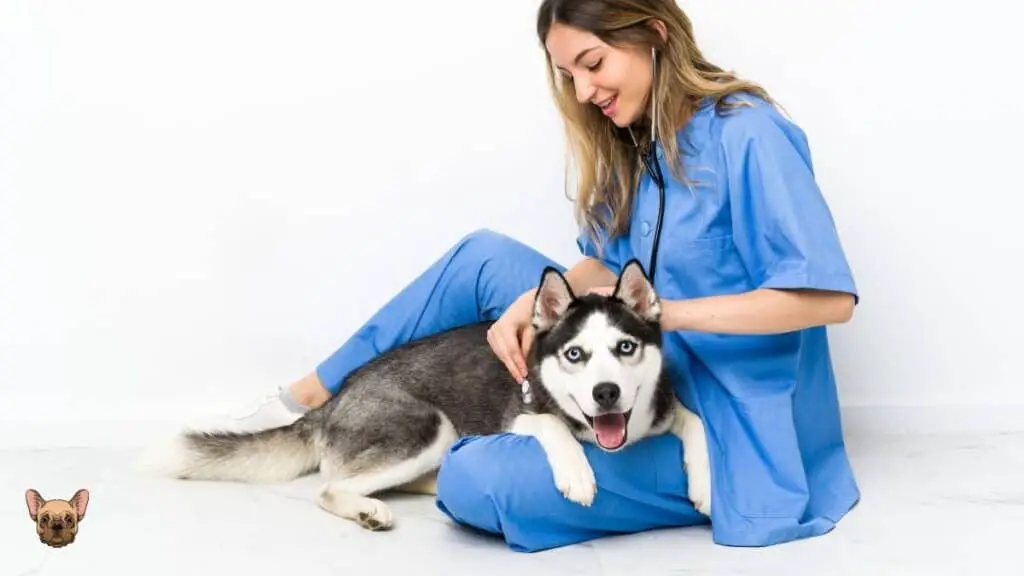
Siberian Huskies are generally a very healthy breed of dog, but like all breeds, they are susceptible to specific health conditions.
Some of the health problems that have been seen in Siberian Huskies include hip dysplasia, elbow dysplasia, allergies, and eye problems such as progressive retinal atrophy and cataracts.
Siberian Huskies are also prone to “snow nose” or “winter nose,” which darkens the skin on the muzzle.
This is not a health problem but is simply a cosmetic issue.
If you consider getting a Siberian Husky, be sure to do your research and talk to your veterinarian about the potential health risks.
Siberian Huskies are a wonderful breed of dog, but they require proper care and attention to stay healthy and happy like all dogs.
Siberian Husky Puppies
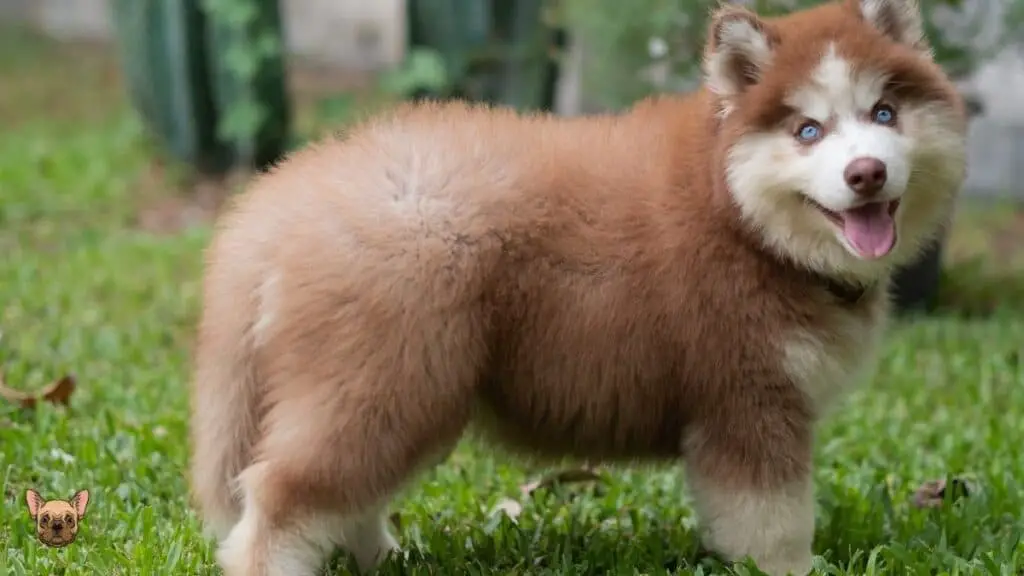
The Siberian Husky is a beautiful dog breed popular among dog lovers.
These dogs are also known as “Siberian Huskies” or simply “Huskies.”
Siberian husky puppies are so cute that it is hard to resist their charms!
Some Information About Siberian Husky Puppies:
- Siberian Husky Puppies are born with a thick coat of fur that helps protect them from the cold weather in their native Siberia.
- Their coat will thin out and become less dense as they grow older.
- Siberian Husky Puppies need to be socialized with other dogs and people early, or they may become fearful or aggressive.
- Siberian Husky Puppies are very active and need a lot of exercise; otherwise, they may become destructive.
- Siberian Husky Puppies are intelligent and can be trained to do tricks or even work as sled dogs.
What do you think about them?
Let me know if you have one and how is your experience with Siberian husky puppies!
Breed Club & Rescue Groups of Siberian Husky
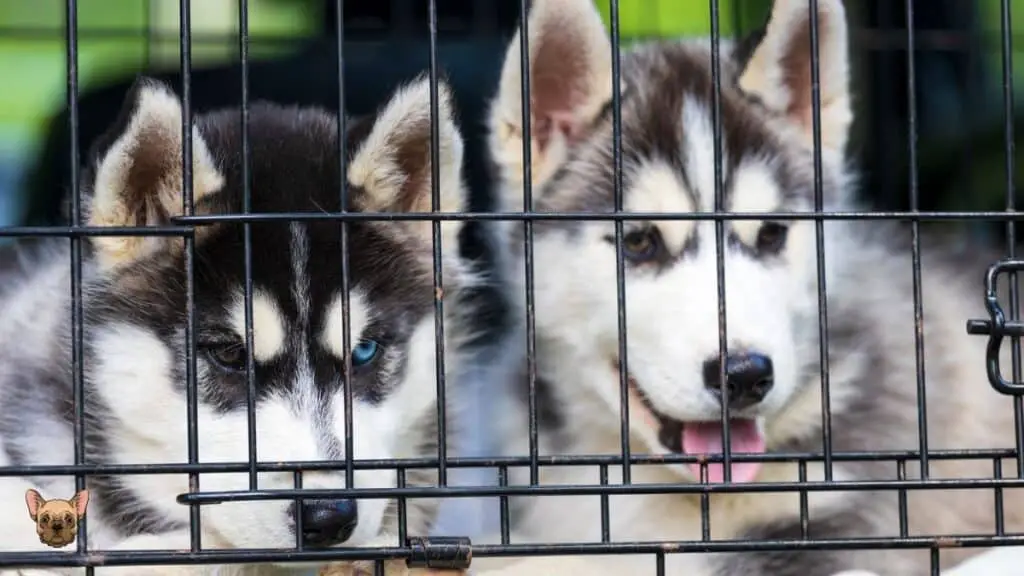
Breed clubs are a great way to learn more about a specific type of dog and find a reputable breeder.
Rescue groups are also an excellent resource for finding adoptable dogs and learning more about the breed in general.
The Siberian Husky Club of America is the official breed club for the Siberian Husky in the United States.
The American Kennel Club recognizes the club as the national parent club for the breed.
Here Are Some of The Many Other Breed Clubs and Rescue Groups Devoted to The Siberian Husky:
- SHCA (Siberian Husky Club of America)
- The Delaware Valley Siberian Husky Rescue
- SSHC (Seneca Siberian Husky Club)
- Siberian Husky Rescue
- Half Moon Husky Rescue, Inc.
- Garden State Siberian Husky Club
- MaPaw Siberian Husky Rescue & Referral Service, Inc.
- Siberian Husky Club of Greater Cleveland
- Siberian Husky Assist Rescue
- Bay Area Siberian Husky Club
In the end,
like any other dog, the Siberian Husky needs very well care, and you should have them vaccinated on time; also, you should spay or neuter your husky to help reduce the number of unwanted dogs in shelters.
Dog insurance is also a good idea in case of injury or illness, as treatment can be expensive.
If you think a husky is a suitable dog for you, be sure to do your research and adopt from a responsible breeder or rescue organization.
FAQ
Is a Siberian Husky a Good Family Dog?
A Siberian Husky is a great family dog because of its friendly and loving personality.
It is also very active, making it a great playmate for kids.
However, Huskies can be escape artists and may not be the best choice for families with small children or other pets.
What Are the Qualities of Siberian Husky?
Many qualities make Siberian Huskies such special dogs.
Some of the most notable qualities include their remarkable strength, boundless energy, playful dispositions, and loyalty to their owners.
Siberian Huskies are also very intelligent, which makes them easy to train.
However, their intelligence also means that they can be mischievous and sometimes stubborn – qualities add to their charm!
What Is Special About a Siberian Husky?
Many things make a Siberian Husky special, but its unique coat is one of the most notable.
Siberian Huskies have a thick, double coat that helps protect them from the cold weather.
This coat also gives them a very striking appearance, which is one of the reasons they are such popular dogs.
Siberian Huskies are also known for being amiable and loving dogs, making them great companions.
Do Siberian Huskies Bark a Lot?
No, Siberian Huskies don’t bark a lot.
In fact, they are relatively quiet dogs.
However, they can howl loudly and for long periods of time.








